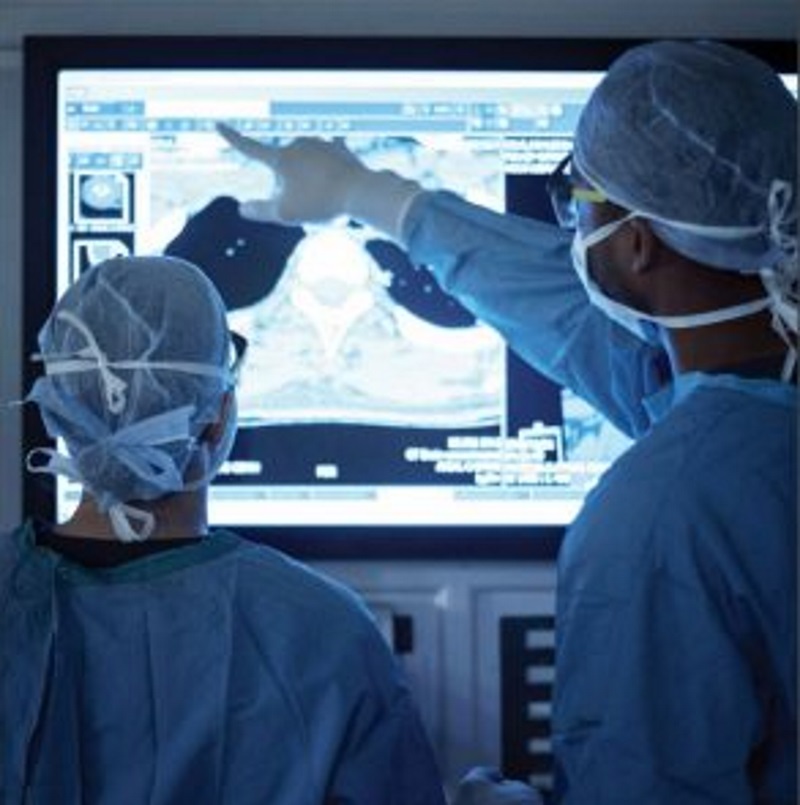On 24 and 25 October 2018, the Royal Society and Academy of Medical Sciences brought together leading scientists to explore this confluence of technologies.

From genomics, to digital technologies, and gene-editing to stratified medicine, a range of emerging technologies promise revolutions in the design and delivery of healthcare in the 21st century.
On 24 and 25 October 2018, the Royal Society and Academy of Medical Sciences brought together leading scientists from academia and industry to explore this confluence of technologies and to consider their potential in delivering novel therapies.
One group of technologies where there is significant excitement about potential applications and benefits in health and care is artificial intelligence (AI) and digital. In 2016-17, the Royal Society’s public dialogues on machine learning showed that many members of the public believed the application of machine learning in healthcare could be of high social value. Since then, the UK Government has announced an AI and health Grand Challenge, with the aim of applying AI and digital technologies to improve diagnostics, disease treatment and prevention, and healthcare delivery. Recent Government guidance for the development of digital technologies for the NHS is also aiming to start a conversation with technology suppliers, patients, and clinicians about how the UK’s healthcare system can best reap the benefits of AI technologies.
So how might AI and data-enabled technologies contribute to 21st century healthcare?
A range of speakers at our conference considered how AI might be applied to the key challenges in healthcare delivery, which Mene Pangalos FMedSci, Astra Zeneca, summarised as: finding the right target, focussing on the right cell or tissue, ensuring the right safety procedures, using treatments for the right patient, and building the right commercial environment.
Finding the right target for treatment – the relevant cellular mechanism or bit of biology that can influence disease progress and health outcomes – is a key challenge in drug discovery. About 90% of drug candidates that are taken into clinical trials fail, and this is in part because of our limited understanding of the human biology of disease. But a combination of genetic studies and machine learning offers hope here. Peter Donnelly FRS, and his team at Genomics plc, for example, are using the data collected from a range of genetic studies to map human genetic variability, and – using machine learning methods – understand how this variability relates to the presence or absence of disease. By using machine learning techniques on the data from genome-wide association studies, Peter can learn which genes are involved in a disease, which cells or tissues are affected by that disease, and the biomarkers or mechanisms that could help treat the disease. This analysis can then be used to make drug development processes for that disease more effective.
These approaches also offer the hope of better understanding human biology, creating a wiring diagram that shows how our genes relate to how our cells work, and what this means for our health. This allows scientists to better understand if a change in biology affects disease progression, and to design therapeutic approaches that target those changes that can affect our health. It also offers new insights into how our bodies work.
Another type of AI application in the area of ‘digital health’ comes in the form of patient monitoring to detect key moments for intervention. Keith Errey, Isansys Lifecare Ltd, set out three types of patient status applications for digital technologies and AI in patient monitoring: in wearable sensors, connecting systems across hospitals, and clinical apps to support decision-making. By using high-resolution data about patients, Keith argued that it will be possible to monitor their progress and status in a way that delivers care more effectively. In one example of such an application, a study with Birmingham Children’s Hospital, 1400 children in paediatric care were monitored using a data collection system and advanced analytics, which created an early warning system that could identify patterns suggestive of deterioration towards cardiac arrest. By flagging high-risk patients, the system can give doctors more time to intervene before a serious health event occurred.
Keith also cautioned against some of the hype or ‘snake oil’ being sold around AI and digitisation, a sentiment echoed by Iain Buchan, University of Liverpool, who suggested that, aside from applications in some well-established domains, AI may have been marketed beyond current evidence of its ability to generate actionable information. In considering the proliferation of healthcare apps being developed to support treatment delivery, Iain suggested there might be scope for an organising framework that combines insights from multiple applications to analyse the interaction of different treatments and self-care behaviours, through a ‘health avatar’ or ‘digital twin’. This would allow patients and clinicians to better understand the interactions between their different conditions and different treatments.
The availability of sufficient, well-curated data is central to the application of many AI technologies, and Iain also explained the importance of civic engagement and public dialogue in creating an environment where patients had confidence in the use of their data. An NHS project on Merseyside has explored how and where members of the public are content for their data to be used, finding nuanced attitudes towards data use, and support for projects that could demonstrably improve healthcare delivery at a local level.
This blogpost gives a few examples of the exciting technologies and treatments discussed at our Delivering novel therapies in the 21st century event. A full write-up and videos will soon follow from the Society’s Industry team.
Lead image copyright: shapechange




